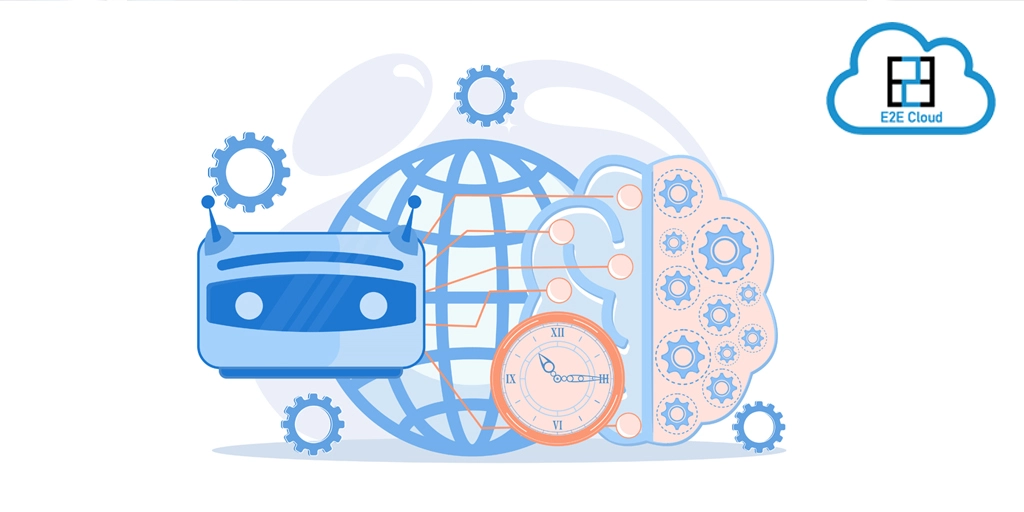The CPU (or the Central Processing Unit) is the brain of any computer. They have gone through a lot of changes and improvements since they were first manufactured. However, the basic functions of all CPUs remain the same, i.e. fetching, decoding, executing, and storing data.
In the present scenario, all companies look forward to cloud-based infrastructure for data storage in order to securely save their valuable database. But the challenging question is: which plan to choose to meet their requirements and get maximum efficiency, and how the kind of CPUs currently available can enhance your user experience in terms of handling and managing both workload and operations.
Let's start by individually learning about each kind of CPU:
What is a Dedicated CPU?
A dedicated CPU means that your company would have CPUs or cores that are exclusively assigned to you, and only you individually can use them. Dedicated CPUs are a very powerful unit that is made solely for applications and tasks that need large processing power. Functions such as data analytics, machine learning, encoding and high-speed operations can process smoothly on such CPUs. The most crucial benefit of using a dedicated CPU unit is that the CPU's performance will be more consistent and efficient throughout its term of use.
You do not need to share the processor's power to run any other functions for any other device. In fact, the Dedicated CPUs will run on their own dedicated core. These kinds of CPUs offer improved ownership and security of data and application.
However, in a shared CPU, the core and the processing unit will be shared by multiple users under a specific server. This shared usage can lead to a higher risk of threat to security and a very slow processing speed. By using dedicated CPUs, these problems don’t happen as each person has their dedicated machine and processor to carry out operations.
Advantages of using Dedicated CPUs
● Through these CPU units, you can use the CPUs Core exclusively.
● Since the CPU unit is exclusive to you, it smoothens operations by providing you complete control.
● As the usage of these units is extremely restricted, these systems provide high-level security and lower risks of a data breach.
● Through these CPUs, you get fast processing and data backup features.
Which Organisations Prefer Dedicated CPUs?
Let’s have a quick analysis as to which type of businesses prefer using Dedicated CPU at present: -
● Big data and data analysis-based organisations operating on the 3V approach
● Large scientific computing firms
● Organizations using continuous integration, continuous delivery toolchains, and build servers usage
● CPU-intensive game servers, like Team Fortress, Minecraft, and Rust
● Audio and video streaming and transcoding
● Machine learning tools such as Apache, TensorFlow, and PyTorch
● Data streaming and programming businesses
What Type of Workloads can Dedicated CPU’s Handle?
Dedicated CPUs can handle workloads like: -
● Medium-to-high-traffic web servers’ load
● Maintain E-commerce sites
● Medium-sized database handling
● Running Enterprise Software as a Service (SaaS)
As all these functions result in high workload on your machine and thus, sustained, and dedicated CPU processing is required at all possible times for smooth operations.
When do you need a dedicated CPU?
You may need a dedicated CPU: -
● If you are running any CPU eater or memory eater application
● If you are receiving "high usage" notifications for consecutive days and facing processing delays on your machine.
Using the above mentioned information and your company's working pattern, you can decide whether a dedicated CPU system is the right choice for you or not.
What is a Shared Virtual Processing Unit (or a vCPU)?
A shared vCPU (or Shared Virtual Processing Unit) is a system where the physical central processing unit of a device is assigned to a virtual machine, and it’s called a vCPU or Virtual Central Processing Unit. Shared vCPU is a time-dependent entity which can be assigned to many virtual machines in an organized time slot for individual or shared use.
In most cases, one virtual machine is allotted a one shared vCPU each if there are many vCPU cores present. Each core of a vCPU is monitored by a Hypervisor which is a kind of monitoring device. Each individual machine core can create around 8 virtual processors (vCPUs).
Many users can access the allotted logical partitions on the shared virtual processing using according to the given time and volume of use.
Advantages of Using Shared vCPU: -
● One vCPU can process the request quickly.
● These CPU units maximize resource utilization.
Shared vCPU machines provide one virtual CPU that is allowed to run for a portion of the time on a single hardware hyper-thread on the host CPU running on your behalf. Using Shared vCPU can be more cost-effective for running small, non-resource intensive applications better than for running standard, high-memory or high CPU intensive applications and tools.
Which Types of Functions can Shared vCPU Perform?
Let us have a quick analysis as to which functions can be carried out using Shared vCPU at present -
● Low traffic web servers – These functions require low data processing and do not have much workload.
● Discussion forums – Through these forums, being able to share data and messages across is the key goal.
● Content Management Systems (CMS) – The primary focus lies in the management of the available data.
● Blogs – Very less memory and operation space are needed to run and maintain blogs.
● Small databases - They are easy to maintain and handle.
● Repository hosting - Data can be accessed as and when required.
● Dev/test servers - Server testing and development is possible.
● Microservices – vCPUs can easily take up the load of microservices.
Choosing the Right CPU for your Needs
Now as Company Managers you need to know Why and When do I need a Dedicated CPU or a Shared vCPU -
Choosing the right plan depends on your company’s workload along with the budget and cost factors as well. CPU allocation may depend on various factors such as the amount of burden your cloud hosting environment can bear without slowing down, which CPU can maximize the output performance, and the number of partitions your processor can smoothly create.
As an instrument, each of the CPUs meets and satisfies different purposes and to fulfil the company’s requirements. One can either opt for a Dedicated CPU or a Shared vCPU or both for different working scenarios. However, in the first place, it is crucial to understand the key features and advantages of using both the units.
Shared vCPUs are ideal for apps that mostly run at low to medium load that to occasionally burst and for brief periods of time. For high production workloads where time is of the essence, or variable performance is not at all intolerable, you should choose dedicated CPU machines only.
In the case of Multiple shared vCPUs, the hypervisor CPU scheduler must wait for physical CPUs to become available and only then further operations and order machines can be accepted. Over allocation of work and commands could result in poor overall performance. Light tasks such as testing development servers, creating discussion forums, and running and maintaining blog sites does not require constant processing support. Hence, using shared virtual CPUs is more favourable in such cases.
So, analysing these factors is critical to pick the right CPU unit for your business. Consider your needs, costs, and the usability to finalise a good CPU for your needs.
Conclusion
Before settling on a particular CPU type, it is recommended to set benchmarks and conduct load testing of the devices to see how your machine performs under specific loads.
For bursty/heavy apps or other jobs, focus on resource usage when the load is the most or at peak. Especially when using shared vCPU. If you see that your app's performance needs to change constantly according to your output needs, consider a machine and processor type with dedicated CPUs.
On the other hand, if the application or software requirements are light and can function well with less load, you can go for shared vCPU.










